It is important to know how to treat a bee sting. If it’s summer, sunshine, and open space, a bee can show up. And if you wear perfume, there is a chance of being stung by a bee. It is therefore important to know the signs, symptoms, and treatment of a bee sting.
Summer is coming. Flowers are more and more beautiful, and they attract people, as well as bees. When going on picnics, hikes, or traveling in the wilderness, always remember to check the surroundings for snakes, spiders, wasps, and bees.
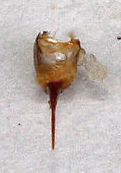
Don’t let food containers opened, they are like magnets for bees and wasps, particularly with sweet food inside. Keep the food wrapped up and the food containers closed. Wasps are even more dangerous than bees, because they don’t die after the first sting, so they can continuously sting you.
How to remove the bee stinger
Don’t do it by squeezing it between your finger and thumb or with tweezers. It will only aggravate it. Use a fingernail to scrape the stinger off of your skin. Remember that the stinger has barbs, which anchor it into the victim’s skin.
Do bees die when they sting you?
Yes. After the sting, the bee will try to free itself from the skin, but won’t manage (because of the barbs) and that struggle will tear apart its abdomen, leaving a portion of the stinger and the venom sac in the skin.
Inside your skin, it will continue to contract itself, in a reflex action, continuously pumping venom into the wound for other several seconds. If we squeeze the stinger, we only insert more venom into our skin.
The other stinging insects like wasps, yellow jackets, and hornets, do not leave the stinger behind.
Here is how to treat a bee sting
First of all, don’t panic. It may be painful for a while, but nothing you cannot handle. It doesn’t mean you are necessarily allergic to the venom. Things can be a lot easier then marketed.
Here is what to do after you got stung by a bee
• GO AWAY FROM THERE! After stinging, the bee releases warning pheromones to warn the other bees of the danger. Other bees will come for sure. Run away from there.
Don’t forget to wash the clothes you were wearing at that time, because the pheromones will still be in your clothes for a very long time and will alarm the bees all over again.
• APPLY COLD. If you manage to do this right after getting stung, it might help you isolate the venom by constricting the blood vessels in the area.
If not, just apply cold as soon as you can. It can be: a piece of ice wrapped in a cloth (not directly on your skin); some frozen vegetables from your freezer; or simply a cold wet towel, cold spray, alcohol or acidic water made of one part vinegar and two parts water.
Apply this for 10 minutes and alternate them with 10-minute break. It will reduce the swelling. There are some alternative methods to ease the pain and the swelling.
Fan fact! Besides stinging, honey bees also bite with their mouth! But not humans. 🙂
However, it is popular among many of us to say bee bite instead of bee sting. Though it is not the same thing!
What to put on a bee bite
People have applied the following products, with very good results:
- a few drops of honey
- calamine lotion;
- a mixture of baking soda and water (3:1);
- toothpaste;
- a bee sting ointment or cream, if you happen to have one around;
- 0.5 percent or 1 percent hydro-cortisone cream or any other cream containing steroids;
- take an antihistamine containing diphenhydramine (Benadryl, Tylenol Severe Allergy) or chlorpheniramine maleate (Chlor-Trimeton, Teldrin).
This shrinks the skin cell tissue, slowing the release of toxins that provoke the body to produce the prostaglandin that causes the pain as the venom tries to move through skin cell walls. (thanks to Rod Yates, a beekeeper with over 55 years of experience, who shared this remedy with us).
Other natural remedies for a bee sting:
- apply freshly cut onion for 20 minutes
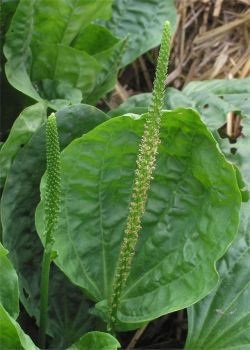
great plantain - rub leaves of plantain (see picture), parsley or basil on the a
- rea;
- rub crushed calendula flowers
- apply slices of unripe papaya, raw onion, garlic or tomatoes
- apply a mixture of turmeric and olive oil
- apply aloe vera gel and honey
- apply essential oil like lavender and castor oil
- apply a few drops of apple cider vinegar.
- take a couple of soluble aspirin, crush them up, add a drop of water to make a thick paste, and pat that on gently.
Bee sting signs and symptoms
As a rule, there should be only swelling, redness and itching in that area.
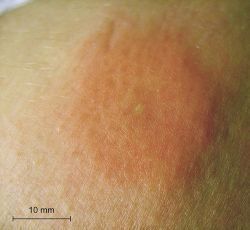
Is a bee sting on the head dangerous?
There are some places on our body that are more painful after the sting than others.
– The area of the eyes and the temple are very dangerous areas and require medical help. The eyes should be rinsed with cold water until the pain eases.
– The mouth or the tongue are very dangerous because the swelling can cause suffocation. Until the victim goes to the doctor, he/she should suck a piece of ice or consume ice-cold drinks or ice-cream to prevent the spreading of swelling.
How long does a bee sting last?
They should smooth within a day, only the swelling can last up to three days. If after a day the swelling and pain increase and/or a red strip under the skin is still there, then you should go to a doctor.
When should we go to a doctor?
- if you were stung in the eyes area or temple, or inside the nose, mouth, or throat;
- if the red strip, swelling and pain increase after one day;
- if you have more than 10 stings.
If a child has more than 50 stings, or an adult has more than 100-150 stings, a threatening toxic reaction can appear. Hospitalization is required in those cases.
A fatal situation requires like 1400 stings, so don’t be alarmed easily. (We are talking about Apis Mellifera here, which is the common honey bee. There is a different story with other bees. )
Bee sting allergy symptoms
Again, don’t panic. You should know that an extremely small fraction of the human population is genuinely allergic to bee stings. These persons MUST always carry with them an emergency kit with injectable epinephrine.
When you get stung for the first time, you don’t know if you are allergic or not. That is why we should always check for the following symptoms, they indicate sting allergy and anaphylactic shock. If you identify them, call emergency medical assistance.
- Rapid swelling around the eyes, lips, tongue, or throat.
- Difficulty breathing.
- Wheezing or hoarseness.
- Itching, cramping, or numbness that is severe.
- Dizziness
- A reddish rash, or hives.
- Stomach cramps.
- Loss of consciousness.
If you know yourself to be allergic to bee sting, you should always carry the emergency kit with you, and your relatives and friends should have read the instructions. After the sting, if you are not able to treat yourself, ask somebody else to help you.
- Administer the auto-injector of epinephrine (e.g. EpiPen) by pressing it against the person’s thigh and holding it there for several seconds. Massage the place for 10 seconds to enhance the absorption;
- Have the person take an antihistamine pill, if he or she is able to do so, without choking;
- Have the person lie still on his or her back, with feet higher than the head.
- Loosen tight clothing and cover the person with a blanket. Don’t give anything to drink.
- If there’s vomiting or bleeding from the mouth, turn the person on his or her side to prevent choking.
- If there are no signs of circulation (breathing, coughing, or movement), begin CPR.
Allergic reactions from a bee sting can be severe or mild.
– severe reactions must be treated in an emergency room, and may include epinephrine injections, antihistamines, and corticosteroid medications, given through an intravenous (IV) line.
– mild reactions can be treated at home and include oral antihistamines, corticosteroid medications, and additional medications that reduce the symptoms of allergic reactions. In most cases, the symptoms of allergic reactions improve after 2-3 days of therapy.
Is there a cure for bee sting allergy?
Yes. It is called Allergy Immunotherapy or Venom Desensitization, and it has a high rate of success. Immunotherapy can desensitize about 80 % of people with bee allergies and 95% of people with wasp allergies.
It uses a series of allergy shots, injecting tiny amounts of the allergen under the skin. The amount of allergen is slightly increased with every shot, making the body adjust to higher and higher levels of allergen.
Thus, the organism will no longer react when it will be exposed to that specific allergen. In one protocol, for example, in the first phase, there are 1 to 2 injections per week for 3 to 6 months. A maintenance injection will then be done once every 2 to 4 weeks, for another 3 to 5 years. (!) There are other protocols used, depending on each country.
If you know other methods of preventing and treating bee stings, or have a story that you would like to share with us, please leave a comment here. Together, we can ease our suffering, if we have the misfortune of being stung by a honey bee.
When and where are honey bees dangerous?
As a rule, honey bees are not worriers, and don’t attack without a good reason. That’s why we should check the area of our camping for two things:
• hives → in the neighborhood there could be some hives brought by beekeepers to harvest/pollinate the area. Honey bees will always get defensive in the vicinity of their hives, because they must protect their food and young.
• swarms or colonies → sometimes honey bees can form swarms due to overpopulation (see pictures).
They can be found in hollow trees, holes in the ground, in cacti, and in sheds. Also, under porches, hollow walls of buildings, or any other place with an entrance to a suitable cavity. Even water meter boxes.
However, their proximity isn’t that dangerous, as they don’t contain stored honey, eggs or young bees. The bees will not be that defensive, unless they are provoked. Don’t do outrageous things like throwing stones into a swarm, scratching it with sticks or stepping on bees!

However, don’t panic if you see a couple of bees foraging around. They are just doing their job and won’t bother you if there is nothing to bother them first. But, be alert if:
- you see bees coming in and out of any crack in the ground, tree, wall. Listen for their specific hum, it will indicate an active bee colony.
- when moving junk that has been lying around for a while.
- when you see bees that are acting strangely. Prior to stinging, bees often show a preliminary defensive behavior, which will imply buzzing around over the head or even flying at your face. These are warning signs telling you that you have entered their area and are not welcomed there.
- Colors are very important. Wear light-colored clothing, preferably white. The dark, bold colors resemble the colors of the enemies and they will attack. Don’t wear black or other dark colored clothes, cover your dark hair with hats or caps. Tie your hair so they won’t get caught in it. Don’t wear clothes that have been washed with UV detergents. Check Can honey bees see? for more details on colors.
- Smells are also very important. Either nice or bad, if they are very powerful, they will rile the bees. Odors of onion, garlic, alcohol, sweat, perfume, floral or citrus aftershave, none is appreciated. Not even the smell of fresh cut grass. Check the Bee’s smell for more details.
- If a bee got stuck in your hair, it will sting you eventually, because it will panic very soon. You have a chance to avoid this by slapping and squashing it against your head. Try to do this quickly before it stings. You may get stung anyway, but at least you have some chances of not being stung. If you don’t squash it, the bee will surely attack you.
- RUN! If somehow you managed to rile the bees and they have begun circling you, you better run as fast as you can. And by running you must understand RUN LIKE HELL! Forget about your bags, food, gathered flowers or whatever, just run.
Seek cover in a car or nearby buildings. While running, try to cover your nose and mouth with your hands, bees try to sting your face and head first.
Never stand still and play dead, you won’t fool bees with this. Just run. Honey bees can fly with a speed of 15 miles per hour (24 km/h) and chase somebody for more then 50 yards (46 m), while African bees can chase us up to 150 yards (137 m). A healthy person can outrun them, so we do have a chance.
![]() BEWARE of KILLER BEES
BEWARE of KILLER BEES
They attack in swarms, in less than 3 seconds and in a very short time, they can cover your entire body with fatal stings. That’s why they are called “killer bees”. Read more about them here: How big is the danger of killer bees? Will they invade the whole planet?
Related articles:
• Venom Immunotherapy – getting rid of allergy to stings!
• Can a honey bee see, smell, taste, touch, speak?
• Do honey bees communicate?
• The jobs of a bee. What is the life of a bee?
• Japanese Honeybees vs Giant Hornet
• The honey bee QUEEN
References and picture credits:
picture credit: wikimedia commons, free cartoons, cartoonwallpapershd,
info references: http://www.cornwallhoney.co.uk/beepedia/stings.htm,
https://www.irvineurgentcare.com/urgent-care-irvine/newsletter-bee-stings.nxg,
https://www.thonky.com/how-to/cure-a-bee-sting/,
https://www.freemd.com/allergy-to-bee-stings/treatment.htm,
https://www.speedyremedies.com/home-remedies-for-bee-stings.html

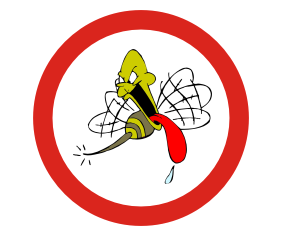

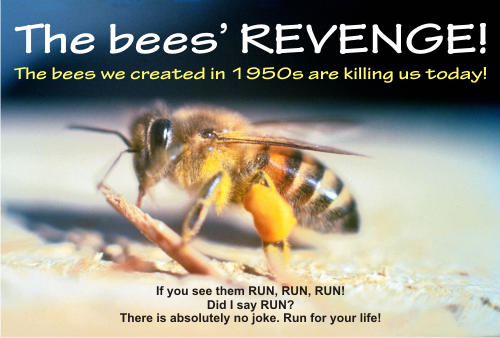
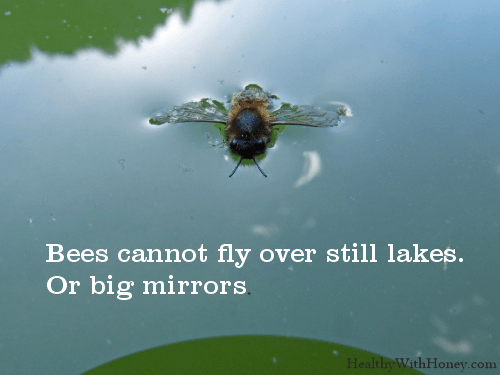

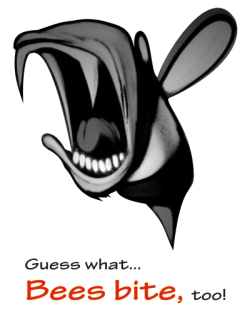
A Dakota Doctors solution to any bee sting +++
Immediately clean preferbaly a new penny with iso-propal alcohol, then apply to the sting area by using tape to hold in place for 15 minutes
minimum. This action will chemically reduce the swelling, sting pain and
itch that usually follows. I have personally used this antidote many times with great success.
Hi john,
Thank you for your input. It sounds simple and easy. Yet, I don’t personally have IPA (Isopropyl Alcohol) in my house and I don’t know where I can find it. I know it is contained in the washing liquid my car uses to wash the windscreen and also in stomatological procedures, but that’s about it. I suppose we can use some medical alcohol instead.
Today a penny is made of tin (or zinc?) plated in copper and this metal is known to help regenerating the cells; it is used topically (pretty much like colloidal silver). So, yeah, it makes sense. It is nevertheless funny that the recommendation comes from an MD.
Again, thanks for your input.
Laura
Sorry to disagree with some of your advice, but after 55years with bees,
I have learned a thing or two that might be worth considering.
An effective treatment of bee stings is Honey! After removing the sting as you described, dab a little honey on the skin. Its an old beekeepers trick. Alternatively, for bee and wasp stings, take a couple of soluble asprin, crush them up, add a drop of water to make a thick paste, and pat that on gently. This shrinks the skin cell tissue slowing the release of toxins that provoke your body to produce the prostaglandin that causes the pain as the venom tries to move through skin cell walls.
As for running after being stung, not a good idea at all. With about 9000 lenses in their eyes, bees see movement much more than we can imagine. Move away calmly, cover the top of you head with your hands because the bees will track you by infrared heat, most of which comes from you head, and at least move to shadow or something that has been permanent in their experience, such as a large tree trunk. I have even saved myself from bees, on the roof of a high building, by sitting very still next to a hot brick wall, which concealed my body heat. They flew backwards and forwards in front of me but couldn’t find me. I have some articles on Wikipedia for more information that could be useful, and urge people against trusting a lot of the rubbish that is recommended by people of lesser experience.
Hi Rod,
Thank you for your advice. I will add the aspirin and honey methods in the article, to make them more visible for people to see.
As for bees seeing the infrared, I have never heard of it, nor have I read anywhere about it. Bees can see ultraviolet indeed, but that’s a different story. I intend no disrespect here, I have a profound admiration for beekeepers, but as much as I researched, only lizards, snakes (like pythons, vipers and boas), some deepsea fish, bed bugs and a certain type of a beetle can do this.
As I said before, honey bees have ultraviolet receptors indeed, and this helps them in land-marking some flowers.
Staying perfectly still makes sense to me, but I doubt a person can stay still after he was stung by a bee. Running seems to be more natural. And safe, because we can run faster than bees.
Again, thank you for your input.
Laura
Thank you for this article, Laura! My son suffers from allergies from spring to autumn and sadly he’s also allergic to bee venom. We started with Immune Therapy last September. Still a long time to go. Meanwhile, your tips will help to avoid being stung.
It’s a good thing you started the therapy. It’s also important to go with it to the end, even if it last for such a long period of time.
thank you for stopping by
laura
Wow, nice article. It’s actually a great one considering warmer days are on the way!
Actually honey bees are more aggressive in autumn, but a sting can happen any time.
laura
A lot of great ideas here Laura, I really love the list of things you can try post sting. I react (in not so good ways) to bee stings and unfortunately a sting on my pinky can create swelling in the entire lower half of my arm.
Perhaps I would be a good candidate for Allergy Immunotherapy as this may help me get over this and my fear of being stung (in particular somewhere close to the face).
Hi Kyle, a sting in the face area is indeed something to be afraid of. You should be very careful and cover it if there is danger around.
The immunotherapy could help with the allergy, I don’t know about the fear.
This comes from a general fear of pain, because at a rational level we know that we won’t die from a sting.
I’ve recently read about a different kind of immunotherapy based on hypnoses and our thoughts entirely. They are still researching though.
thanks for dropping by
laura
Thank you, a lot of good info in here. What is the name of the plant in the image next to the title, Other Natural Treatments?
Hi Sue, it’s great plantain. Also known as Plantago major. It contains substances which might help decrease pain and swelling, also been able to kill germs, bacteria and fungi.
It is used in bladder infections, bronchitis, colds, and irritated or bleeding hemorrhoids. We can also find it in many skin creams.
Quite a remarkable plant, and really grows on all roads. When I was a child I use it to stop the bleeding on a fresh wound.
thanks for your comment here,
laura
Very informative. Bees like most animal respond mostly as a defensive mechanism. I heard that if a bee swarms around you that the best thing to do is lay head down flat on the ground?
Not quite. Bees are not like bears. The only intelligent think to do when bees are swarming around you is to keep running. They are doing this for a reason, don’t believe they have mistaken you for a tree. Run and don’t look back. 🙂
laura
Thank you
I dont major in bee stings but I do herbs if I find some herb that helps alliviate bee stings I will let you know
Bryan
Thank you, Bryan. It will help a lot.
laura